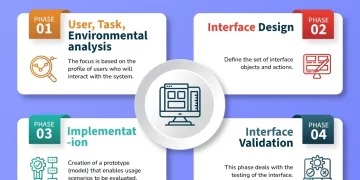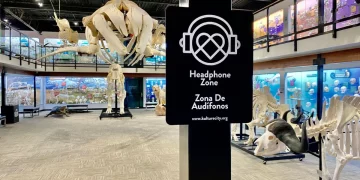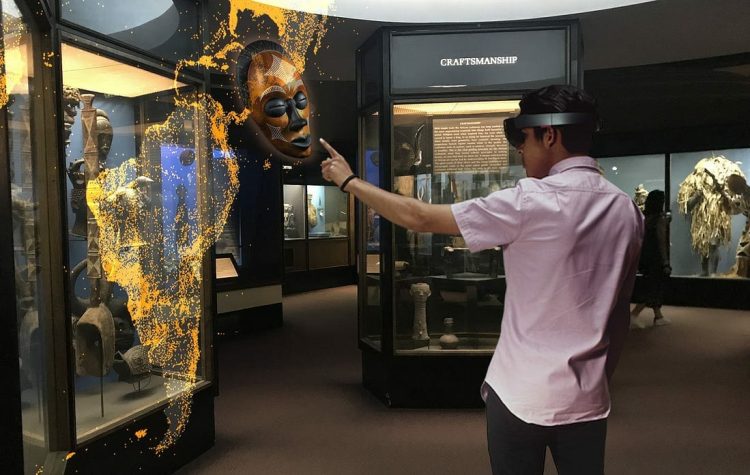Introduction
In the digital age, museums are undergoing a transformative shift. Traditional exhibitions, with their static displays of artifacts and artwork, are being replaced or complemented by interactive exhibitions that invite visitors to engage, explore, and learn in dynamic ways. The future of museums is no longer just about viewing objects in glass cases; it’s about fostering a deeper connection with both the exhibits and the stories they tell. This article explores why interactive exhibitions are becoming the cornerstone of modern museums and what makes them so crucial for the cultural institutions of tomorrow.
1. The Evolution of Museum Experiences
From Passive to Active Participation
For centuries, museums have been revered as places where people could come to passively observe history, art, and culture. Whether it was the Louvre or the British Museum, visitors typically walked through vast halls of precious objects displayed for admiration and study. However, in recent years, museums have faced the challenge of maintaining relevance in an increasingly digital and fast-paced world. With the rise of smartphones, social media, and immersive technologies, the conventional museum experience no longer holds the same allure.
Enter interactive exhibitions. These exhibitions utilize cutting-edge technologies—such as augmented reality (AR), virtual reality (VR), touchscreens, and sensor-based interactions—to create more engaging and personalized experiences for visitors. Interactive exhibitions represent a move from passive observation to active participation. Visitors can now become part of the story, allowing them to connect with exhibits in a way that traditional methods never could.

2. Enhancing Engagement Through Technology
Digital Tools for Deeper Connections
The role of technology in enhancing visitor engagement is undeniable. Interactive exhibitions allow people to explore exhibits from multiple angles, diving deeper into the context and history of the objects. Through digital screens and AR/VR technologies, visitors can view objects up close, even virtually “touch” artifacts, and experience historical events as if they were part of them.
For example, the Smithsonian National Museum of Natural History offers an interactive experience where visitors can explore fossils and animals in high-resolution 3D. Similarly, the Van Gogh Museum in Amsterdam uses digital projections to create a virtual immersion in Van Gogh’s paintings, bringing his art to life beyond the frame. These experiences allow visitors to connect with exhibits in an emotional and intellectual way, creating lasting memories and a deeper appreciation of the content.
3. Personalized Experiences for Every Visitor
Tailored Interactions with Museum Content
Interactive exhibitions also offer the unique advantage of personalization. Unlike traditional displays, where everyone sees the same thing in the same way, interactive exhibits often allow visitors to curate their experience. For instance, interactive displays may allow users to select which themes or stories they want to explore further, adapting to different learning styles and preferences.
Personalization extends beyond content. Many museums now incorporate technologies that track visitor movement or use smartphone apps to offer individualized tours. This means that a visitor’s experience is dynamically adjusted based on their interests, location within the museum, and prior engagement with the content. Personalization creates a more immersive experience, increasing the likelihood that visitors will learn and remember more about the exhibits they explore.
4. Bridging Generational Gaps
Making Museums More Accessible and Inclusive
Interactive exhibitions cater to a broad audience, including children, adults, and seniors, and they can bridge generational gaps in museum engagement. Young visitors, in particular, are often digital natives, accustomed to interactive and gamified experiences through video games and apps. These young audiences may find traditional exhibits boring or difficult to relate to, but interactive exhibitions can captivate their attention by integrating familiar digital tools with educational content.
For example, museums like the Exploratorium in San Francisco offer hands-on science exhibits that encourage children to experiment and problem-solve. By introducing interactive elements, these exhibitions create a space where learning is fun, dynamic, and inclusive.
At the same time, older generations who may not be as tech-savvy can also benefit from these experiences. Many interactive exhibitions offer simplified interfaces, voice-guided tours, and tactile interactions that allow everyone to engage with the material in ways that best suit their capabilities.
5. The Role of Gamification in Museums
Making Learning Fun Through Play
One of the most exciting aspects of interactive exhibitions is the integration of gamification. Gamification applies game-design elements, such as point systems, challenges, and rewards, to non-game contexts like museums. This approach makes learning fun and motivates visitors to interact with exhibits more deeply.
At the Science Museum London, for instance, visitors can participate in various interactive challenges that combine education and play. This encourages them to engage with exhibits in a more competitive and fun way. Gamification can also increase visitor retention and satisfaction, as people are more likely to spend more time in an exhibit if they feel like they are “playing” rather than just passively observing.
6. Increasing Accessibility to Art and History
Expanding Museum Reach Beyond Physical Boundaries
Interactive exhibitions also contribute to greater accessibility. With the rise of digital platforms, many museums are expanding their offerings beyond the physical walls of the institution. Virtual exhibitions and online platforms allow people from around the world to access museum content from the comfort of their homes.

The British Museum, for example, offers an online collection that lets visitors explore 3D models of objects and access curated tours. This digital transformation means that museums are no longer confined to a specific geographic location but can reach global audiences.
Moreover, technologies like VR can allow individuals with disabilities to experience exhibits in ways that were previously impossible. For example, those with mobility issues can take virtual tours of exhibitions, while blind or visually impaired visitors can access audio descriptions and tactile models of art and artifacts.
7. The Environmental Impact of Digital Museums
Sustainability in Museum Practices
In a world increasingly concerned with environmental sustainability, interactive exhibitions are also more eco-friendly than traditional displays. Digital exhibitions reduce the need for physical artifacts to be moved, maintained, or even displayed in temperature- and humidity-controlled environments, which often require significant energy consumption. Furthermore, virtual reality can offer the opportunity to experience artifacts that would be too delicate or rare to showcase physically.
In this way, digital tools not only make exhibits more engaging but also contribute to the museum’s commitment to sustainability. For museums looking to reduce their carbon footprint, moving towards interactive and digital exhibitions represents a forward-thinking approach to modernizing their operations.
8. The Future of Museums: A Blend of the Digital and Physical
Hybrid Models for a New Age of Learning
While interactive exhibitions offer enormous potential, they don’t signal the end of traditional museum experiences. The future of museums lies in the blending of the digital and physical realms. Hybrid exhibitions will allow visitors to physically explore artifacts while simultaneously interacting with digital elements that offer deeper insights into the exhibits. This convergence of the physical and virtual will provide a richer, more immersive experience than either could alone.
For example, a museum might host a historical exhibit about ancient Egypt, where visitors can see mummies and hieroglyphics up close, but also engage with AR technology that allows them to digitally explore the pyramids or watch historical reenactments of ancient rituals. These hybrid experiences will offer something for everyone, blending the tactile authenticity of physical exhibits with the depth and dynamism of digital interactions.
Conclusion
Interactive exhibitions are rapidly becoming the future of museums because they enhance engagement, personalize experiences, and bridge generational gaps. Through the integration of cutting-edge technologies like AR, VR, and gamification, museums are transforming into spaces where visitors don’t just observe history—they actively participate in it. These innovations are making museums more accessible, sustainable, and fun for a global, diverse audience.
As we look to the future, we can expect museums to continue evolving into dynamic, immersive environments that invite visitors to engage in new and exciting ways. Interactive exhibitions are not just a trend; they are the future of how we experience and understand the world’s cultural and historical treasures.

















































